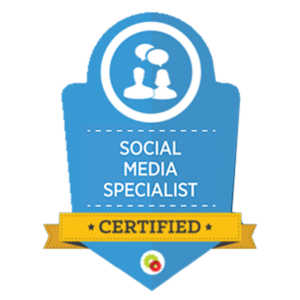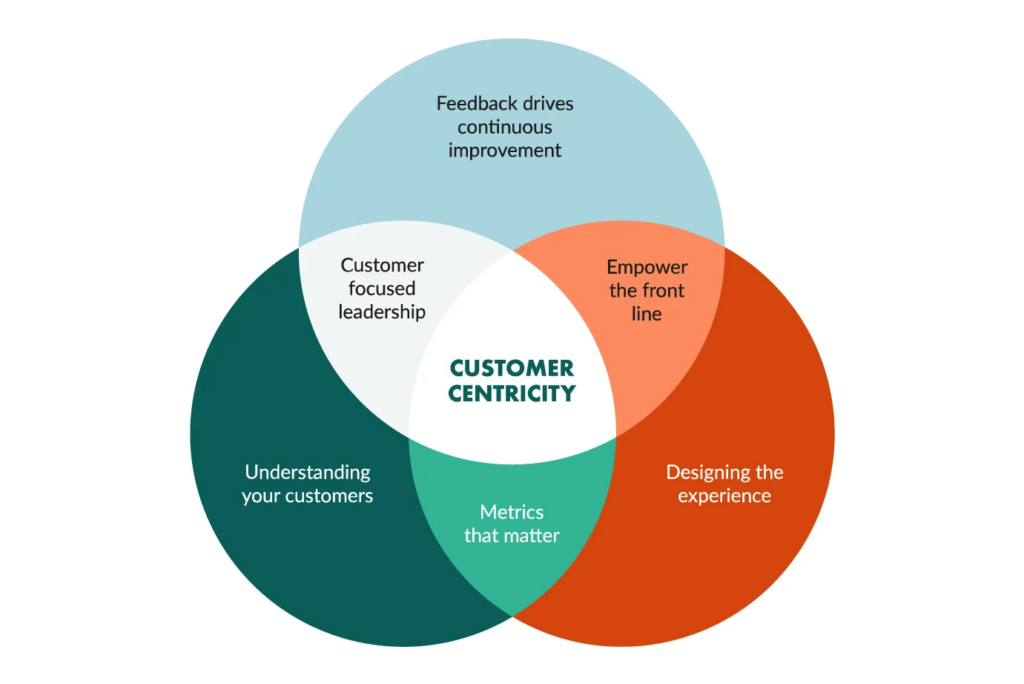MARKETING
Key Steps for Building Strong Brand/Customer Relationships

In modern business, standing out from the crowd isn’t easy. A strong brand-customer relationship is vital, as it drives customer loyalty and engagement. This can be the deciding factor in your business’s long-term success.
This article will explore the importance of your brand-customer relationship. We’ll explain how the four principles of brand management can help you build and maintain that relationship.
What is a Brand-Customer Relationship?

Your brand-customer relationship is the connection between your business and its customers. It’s influenced by various factors, but is essentially formed through the perception and reputation of your brand. You build this relationship on trust, loyalty, and engagement.
As well as the quality of the products or services you offer, your company’s reputation is also important. So is the customer’s overall experience with your brand. To put it simply, there are both tangible and intangible aspects to your brand-consumer relationship.
The tangible aspects include the quality of your products and services, as well as your sales, customer service, and support. We measure and affect the intangible parts of the brand-customer relationship with brand management.
Why is Brand-Customer Relationship Important?
It’s well-known that customer experience is one of the most critical factors in customer loyalty – and your brand-customer relationship is central to this. A good relationship encourages customer loyalty through engagement.

Customers who have a positive experience with your brand, and thus a strong brand-customer relationship, are more likely to recommend your company to others and make repeat purchases. This drives higher customer lifetime values and can grow your revenue through word-of-mouth and social sharing.
In addition, a solid brand-customer relationship helps to differentiate your business from its competitors. Positive associations with your brand make it easier for customers to identify and choose it over others.
The 4 Principles of Brand Management
So, now you know what we mean by a brand-customer relationship. But it probably still seems like a vague concept. Yet, whether you’re aware of it or not, you’re affecting it with everyday business decisions, advertising, and communications.
That’s why many established businesses have dedicated brand management teams to build consistency across your brand. These four overlapping principles guide brand management strategy. Measuring them will show you the state of your brand-customer relationship.
1. Awareness
This is how aware your target audience is of your brand versus others in your market. Think of synonymous brands such as Coke for soft drinks or Hoover for vacuums. These are the brands with the highest level of awareness in their respective areas.
Most businesses won’t become household names, but there are other ways to measure brand awareness. Analyzing organic searches for your brand name, as well as social media mentions, content shares, and so on, can give you a good idea of your audience’s awareness level.
That said, raising brand awareness isn’t just about getting your brand name in front of people. Increasing and maintaining awareness means you must also stand out in the customer’s memory. For brand managers, this means creating a unique brand personality for your business.
2. Reputation
Your reputation is what customers think about when they see your brand. This might be certain words or emotions they associate with your brand or product or a generally positive or negative sentiment.
This has a significant overlap with your brand awareness. If you’re not working on maintaining your brand reputation while growing awareness, you can spread negative sentiments and do more harm than good for your brand.
Building a positive reputation takes time. You can affect it through your communication, service, recruitment, and community projects. Your company culture, mission statement, and guiding principles can also tell external stakeholders about your reputation and values.

Are You Ready to Master Social Media?
Become a Certified Social Media Specialist and learn the newest strategies (by social platform) to draw organic traffic to your social media sites.
3. Loyalty
Research shows that loyal customers are five times more likely to make repeat purchases and four times more likely to recommend your business. That’s why customer loyalty is the goal of your efforts to improve your brand awareness and reputation.
Easier said than done? Perhaps. Customer loyalty can be challenging to build, partly because many customers look for different things to get their best experience out of a business. Some customers value convenience and price, while others want on-demand support.
For example, customers who come to your brand for value might appreciate your customer service measures such as a toll-free number or online text chat for inquiries. On the other hand, those looking for convenience might appreciate a premium-rate line that guarantees instant access to support.
That means that to increase customer loyalty, brand managers must analyze customer behavior and feedback. Personalization is a major driver of customer loyalty. When you listen to a customer’s needs and make changes based on feedback, you show that you value their contribution to your business.


4. Equity
Brand equity represents your brand’s perceived value. Think of it as the premium customers are willing to pay to access your brand over cheaper competitors. This leads to higher ROI on both new and developed products, as you can incorporate this into your pricing.
In his book, “Strategic Brand Management: Building, Measuring, and Managing Brand Equity”, author Kevin Lane Keller describes four key steps to building your brand equity:
- Establish your brand identity by identifying your target audience. Then, create your brand assets and stories around it.
- Define what your brand means. You do this by clearly stating your company values and through the projects you choose to support.
- Analyze how customers respond to your brand. What feelings and emotions does your brand evoke? Direct feedback and sentiment analysis are two good ways to judge this.
- Build your brand resonance by developing your existing customer relationships. Use your brand management to form deeper emotional connections with your customer base.
High customer satisfaction and customer loyalty are key indicators that your brand equity is rising.
How to Use Brand Management to Improve Customer Relations
Now you understand the principles of brand management, let’s look at how to use this in an everyday business setting to improve your customer relations.
Start With Brand Basics
If you’re new to brand management, the first step to improving customer relations is establishing a clear and consistent brand identity. This means developing a brand strategy, mission statement, and brand identity that aligns with your business’s values and goals.
You’ll also need to make key decisions about core brand assets like your logo design. Simple assets or slogans can be crucial in reinforcing the emotions and values you want customers to associate with your brand. Give these decisions the time and thought they deserve.
Share Your Stories
Whether we’re talking about your brand’s origin story, mission, or even employee journeys and customer testimonials, sharing these stories will help you make deeper emotional connections with your customers.
For example, many companies make support content like video tutorials for their products. But one way to make your customers feel more connected to this process is to share user-generated content with success tips and product guides.
Optimize Your Online Visibility
In today’s digital age, your business needs to have a strong online presence. Optimizing your online visibility can increase brand awareness and reach more customers.
This includes developing a website and creating social media profiles, as well as covering other basics like listing your brand in online directories and review sites.
Create an Internal Branding Guide
A strong brand identity is not just built by communicating with customers. You also need to ensure that employees understand and align with the company’s branding efforts. You can achieve this by creating an internal branding guide.
Use this as a reference for all employees to ensure consistency in tone of voice and other branding markers for all departments.
Focus on Your Customer Journey
It’s vital to understand how customers interact with your brand, from the awareness stage to post-purchase. By understanding the customer value journey, you can identify areas for improvement and tailor your branding efforts to meet the needs of your customers at each stage.


Engage Your Customers on Their Terms
Engaging with your customers on the channels they prefer is crucial to building a strong brand-customer relationship. Whether it’s social media, email, phone, or in-person interactions your audience prefers, make sure they can access your brand on those channels.
Personalize the Customer Experience
While we can fit customers into groups and demographics, each one is also unique. By analyzing a customer’s preferences as they interact with your business, you can give them a customer experience that meets their needs every time.
This can be small, simple, gestures. For example, give your priority customers access to a separate business phone number to speed up their support experience.
Analyze and Improve
Finally, to truly optimize your brand-customer relationship, you need to analyze your performance and make adjustments as you go. This includes tracking website traffic, monitoring social media engagement and sentiments, and analyzing customer feedback.



Are You Ready to Master Social Media?
Become a Certified Social Media Specialist and learn the newest strategies (by social platform) to draw organic traffic to your social media sites.
By using analytics, you can make data-driven decisions to improve customer relations and drive growth.
Final Thoughts: It’s all in the Details
Your brand-customer relationship goes deeper than your surface interactions with your customers. When we’re talking about subjective factors like emotion and engagement, the little details can make the biggest difference.
Even seemingly unrelated decisions like your choice of website hosting providers can have a knock-on effect. Does your domain name reflect your brand? Is it instantly recognizable to customers? When we think about it in these terms, it’s easy to see why a choice like this can have repercussions for your brand.
Effective brand management means you don’t have to fret about the small details of every decision. Having a clear brand strategy and documents like an internal branding guide help ensure consistency, even up to the decision-making level.



















